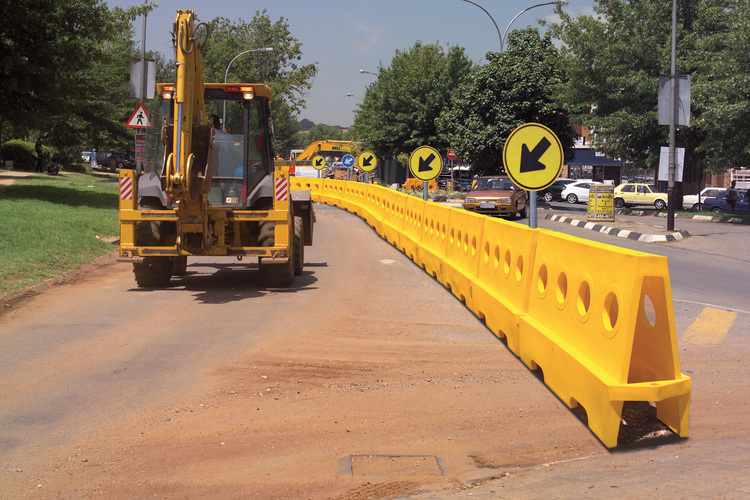Road-construction sites are now almost an expected part of the scenery when you drive through South Africa. Many roads are in the process of being upgraded or urban roads widened. Motorists have become used to seeing roadworks, detours, and road-safety equipment on local roads. Such road improvements are essential to cater for the increased number of vehicles on the roads. Also part and parcel of such upgrades is the focus on creating safer road conditions. The Mentrail guardrail system is an example of an essential road-safety device that helps to reduce road-accident fatalities and the number of vehicle accidents in the country.
But what exactly is a Mentrail and why is it important? A Mentrail is a type of guardrail that is often installed at bends on roads, next to roads over waterways, and between two carriageways on highways. This guardrail is a galvanised steel-frame system that has a bull-nose or buried terminal at the end of the system. The system also use galvanised W-beam panels, reflectors, and wooden or metal posts to which the panels are attached. The Mentrail is as such a road-safety device. It has been designed to prevent a vehicle from leaving the safe travel path in a manner that minimises the damage of impact to the vehicle and its occupants when it hits the rail. The Mentrail redirects a straying vehicle upon side impact back into the safe travel path. It also helps to reduce the speed of the errant vehicle through the friction caused by the vehicle against the Mentrail beam. It furthermore serves to prevent a vehicle from moving into the opposing lanes of oncoming traffic on a double carriageway and to prevent a motorist from making a U-turn on a highway into the fast lane of the opposite carriageway.
The Mentrail also prevents a vehicle from crashing into an unforgiving object such as a wall, tree, or streetlight, should such a vehicle accidentally leave the roadway. The Mentrail furthermore serves to prevent a vehicle from moving into demarcated pedestrian and bicycle lanes and thereby protects the pedestrians and cyclists from a direct impact by a straying vehicle. The Mentrail guardrail can be moved from one section of road to another and has exceptional longevity. With the low maintenance requirements and the integrity of the system still largely in place even after being hit by a vehicle, such a rail system certainly helps to improve road safety.
Where Mentrail Systems Are Installed
The Mentrail system is only installed on sections of road where there is enough clearance behind the rail and where its installation can help to reduce the severity of an accident. If there is a large enough clear area behind the Mentrail for a straying vehicle to come to rest or to return to its original path without hitting an unforgiving object in the process, it is better not to install it. However, if the absence of the Mentrail system on, for instance, a bend in the road on a mountain pass can lead to vehicles straying over the side of a cliff or mountain, it is certainly better to install the Mentrail system. Installation is done by driving the posts into the soil and attaching the rail panels to the posts. Upon impact, the entire system works together as a unit to stop – or reduce speed of – the impacting vehicle. The impact energy is disbursed through the length of the panels and, as such, the severity of the impact is significantly reduced for the vehicle occupants.
The installation of the system helps to reduce median clustering, especially at night, as it clearly indicates the side of the safe travel path. As such, motorists are more confident to drive as far left of the median line as safely possible rather than keeping near to the median line out of fear of putting a wheel off the road. The guardrail is designed to ensure that it can be curved to follow a sharp bend in the road. No doubt, the system is important to help improve the safety profile of South African roads.
Where to Order the Mentrail
View our range of products and get in touch to discuss your road-safety product requirements. Our products are strong, perfectly suited for South African road conditions, and easy to install.

